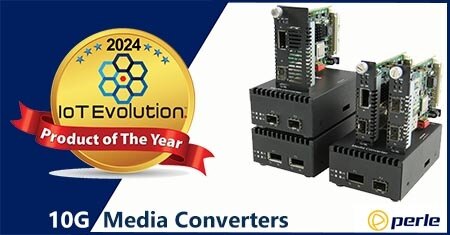
The nanosatellite era is set to expand the IoT's scope
By Max BurkhalterSeptember 20, 2019
Observers of the internet of things over the past few years may be wondering where this fast-growing technology could possibly go next. Improbably, the answer appears to be "outer space." Sensors integrated with equipment of all kinds have proven to be critical parts of networks, and attempts to gather ever-more detailed results have led to the creation of nanosatellites, tiny devices launched into orbit to collect data.
As with many advanced branches of the IoT, companies are making progress in their attempts to capitalize on the potential value of nanosatellites. As this first round of projects yields results, developers will doubtless find new and more advanced uses for the information streaming in from the devices.
What is a nanosatellite?
Network World described nanosatellites as "tiny" and "cheap," with each of the devices costing roughly $100 and covering a space roughly the size of a postage stamp. Rather than sensor-equipped devices, the satellites are basically just the sensing components, with little to no extra material. The devices work in swarms to collect information. Stanford University assistant professor Zac Manchester told Network World most of the cost associated with using nanosatellites comes on launch, as even relatively affordable devices need expensive rocket assistance to get into orbit.
The devices are not designed to last forever. Indeed, each swarm of nanosatellites will likely complete a single measuring task while in orbit. Manchester told Network World these purposes include measuring movements on the earth below. Scientists could study animal migration with a cloud of IoT satellites, or ambitious companies or government agencies could potentially determine human data points such as crowd density.
The Federal Communications Commission has taken early action to ensure all nanosatellite swarms are approved by the government, ensuring companies can't just send these IoT receptors into space without permission. This preemptive action is meant to reduce the risk of collisions and transmission interference, according to Network World.
What are companies doing with nanosatellites?
Many business ventures are currently scaling up their efforts to take nanosatellites and space-based IoT sensors from the realm of the theoretical into practical business tools. ZDNet indicated that the hopefuls in this industry consist of existing satellite manufacturers and startups hoping to jump aboard the industry at a time of rapid growth and development. These businesses bring differing philosophies about what IoT receptors in space will entail.
For example, existing players in the satellite space such as Iridium use devices that can last up to 19 years. The short-lifespan nanosatellites from companies such as Sky and Space Global are meant to last four years or so. The company is intentionally planning to change the devices at that time, determining that there will be better sensors available every few years and planning to give its clients access to the new technology.
Networks of nanosatellites aren't just about acting as sensors - these devices can also provide global connectivity and transmission, important qualities for IoT-using businesses to have. ZDNet reported that new tech providers are springing up to provide nanosatellite networks that are designed to stream data around the world. These will interface with modems owned by corporate clients and provide direct data transmission, rather than operating through existing communication networks.

What industries are moving toward space-based IoT?
A report from Forbes contributor Elizabeth Howell revealed some of the early applications of this data transmission via nanosatellite network. Fleet Space Technologies, based in Australia, is working with corporate clients that already operate large-scale IoT networks. Fleet's swarms of satellites will allow these companies to share their data more effectively at global distances.
The client organizations that are working with Fleet are in the heavy industry sector - mining, energy and agriculture companies are among the first wave of customers. These are organizations that have ample data flowing from their facilities around the world. Crunching the information to provide analytics and other useful applications has become an accepted best practice in the industrial space, which means the satellite network is merely making this process easier and more efficient for companies, rather than thoroughly transforming the way they use data.
Whether companies decide to use satellites as transmitters for their existing IoT deployments, investigate sensor-based use cases or delve into new applications that haven't yet exited the testing stages, it's clear that swarms of small space-based devices may soon become ubiquitous parts of networks around the world.
Companies in heavy industry sectors such as mining, agriculture and energy need to ensure their in-house networks can handle the vast loads of data they'll have to process in the near future. See how Perle has helped energy utilities transmit data through high-capacity Ethernet switching equipment.



